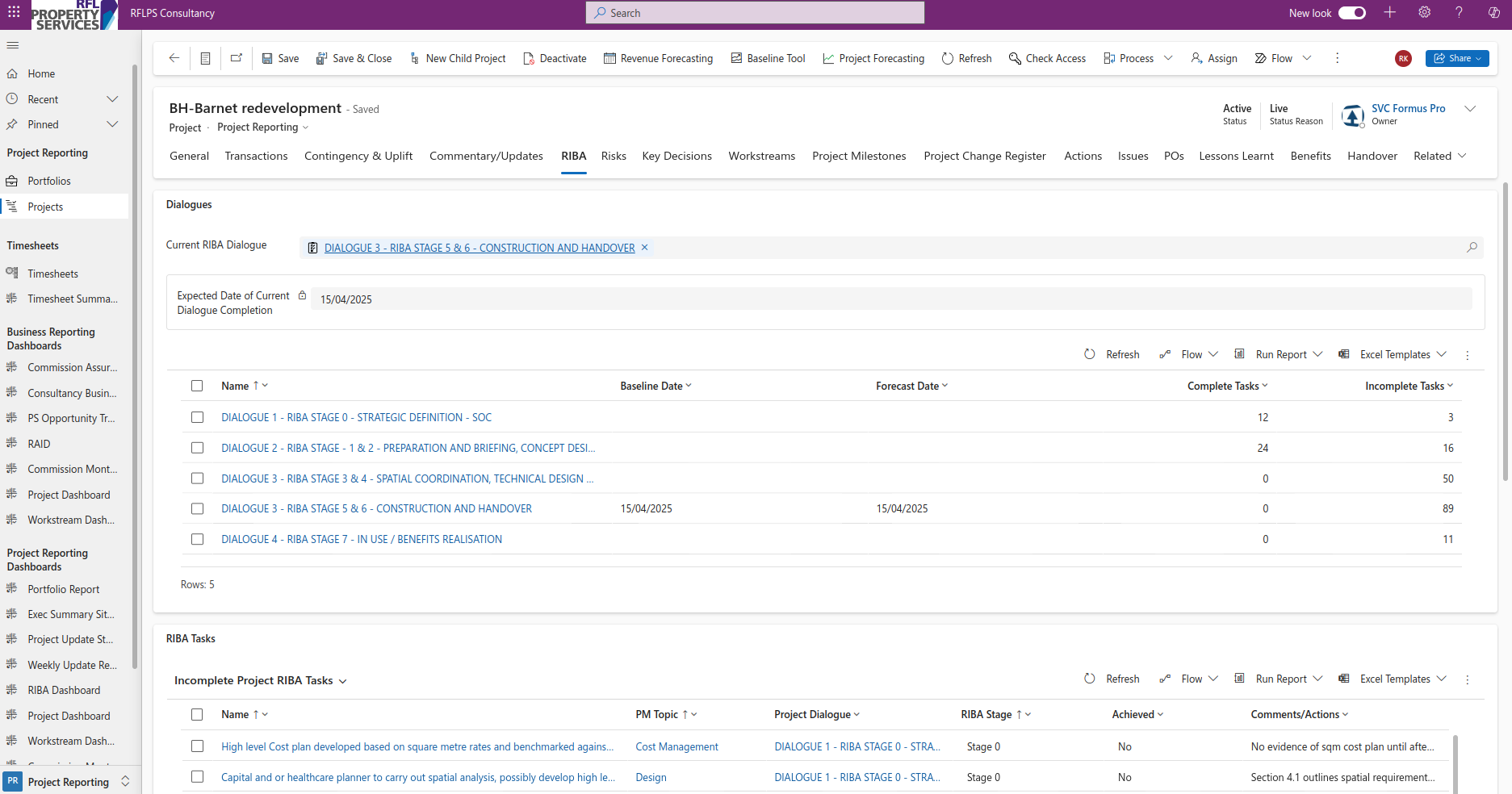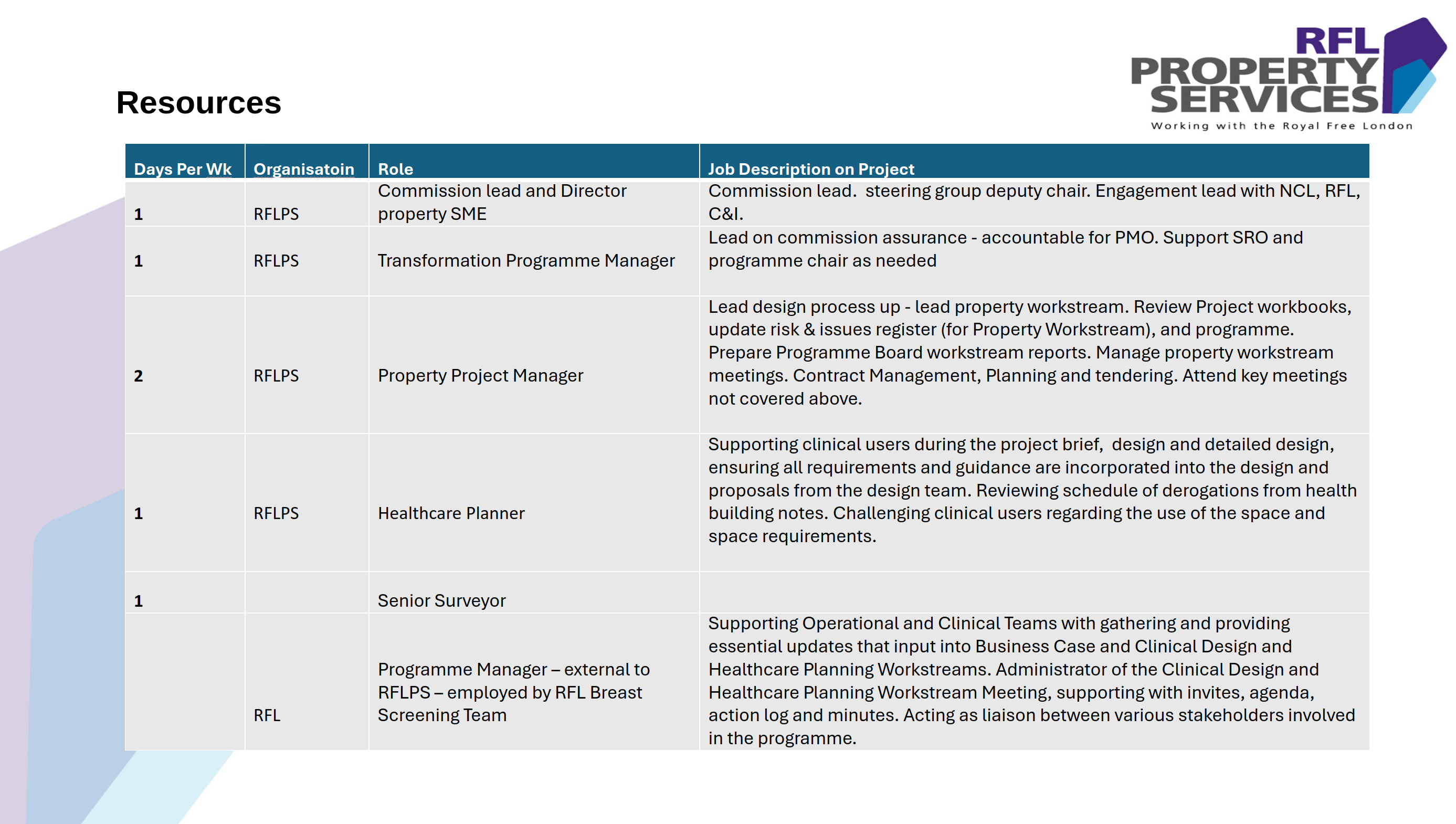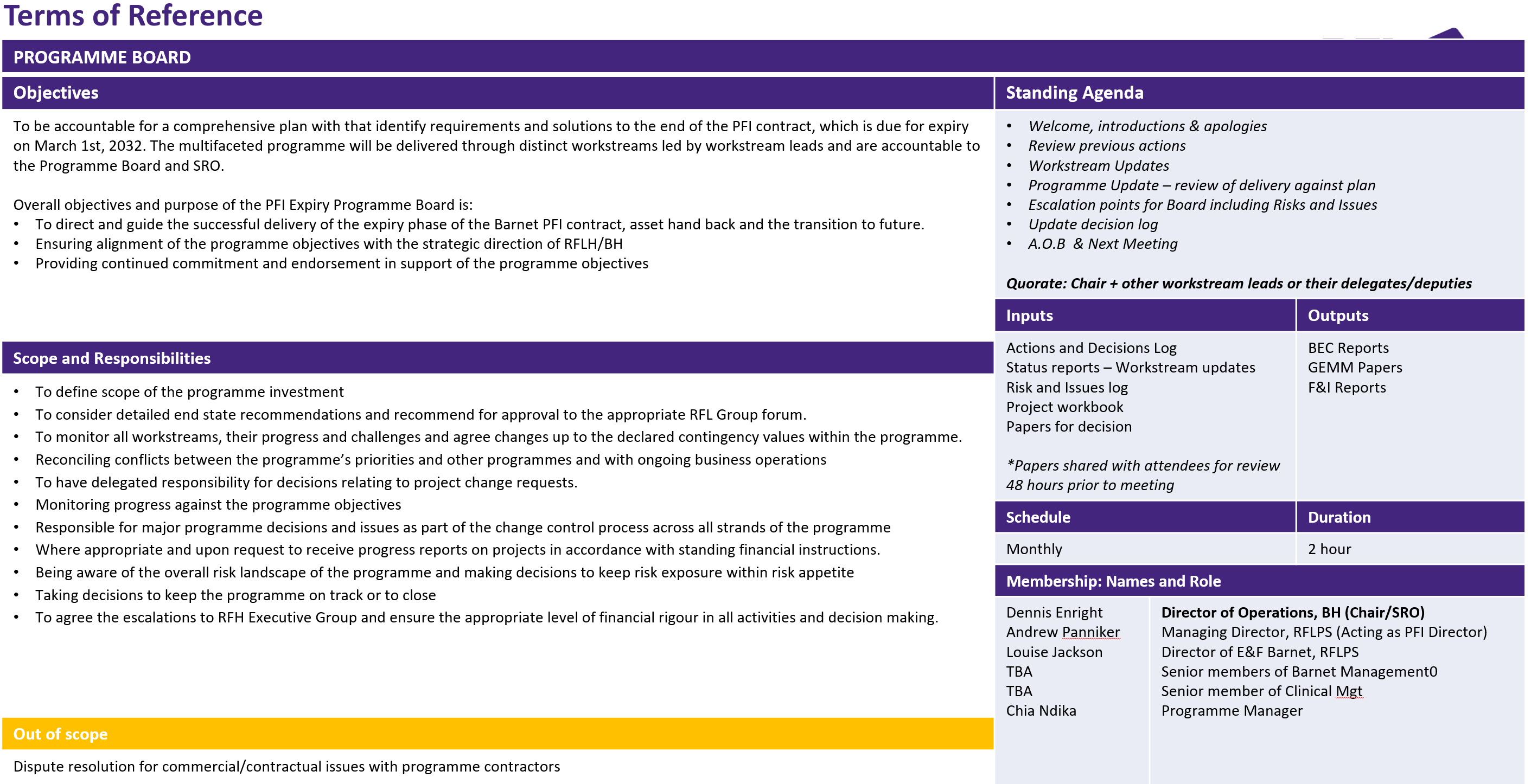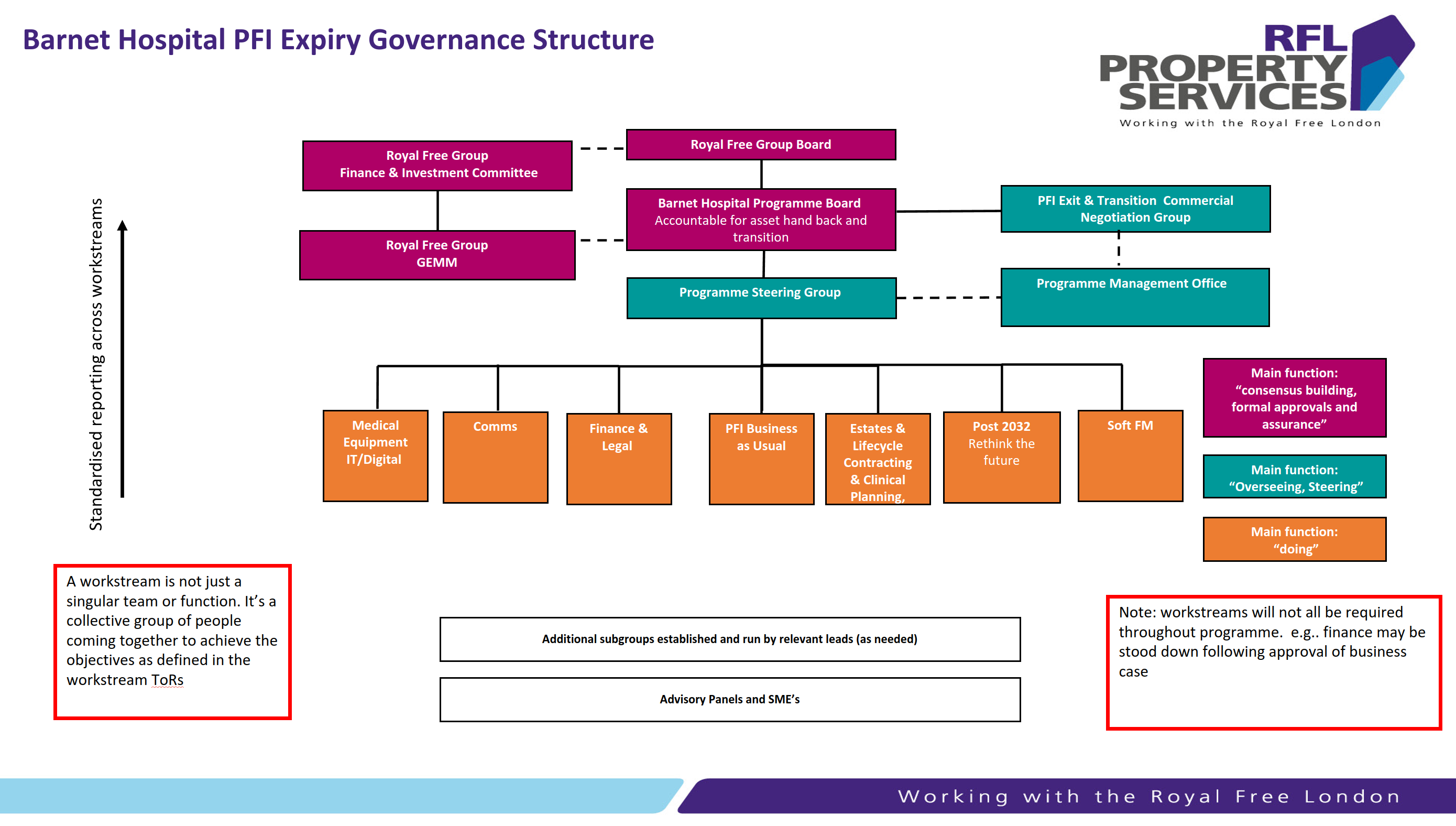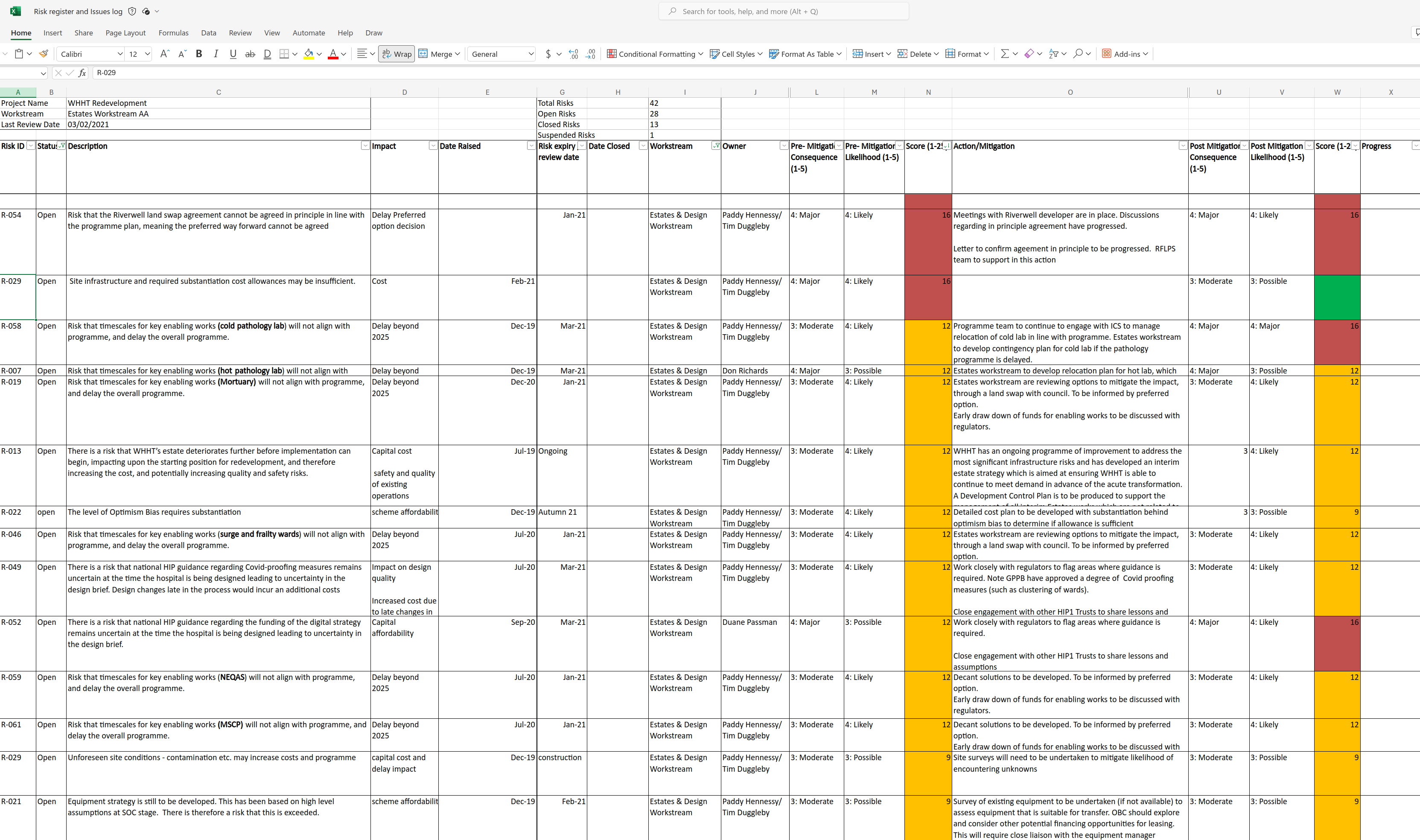Project Playbook
Design Stage - Project identification, approval and acquisition
Assessing the Opportunity
Opportunities for new projects can be acquired in a number of ways, from invitations to tender (ITT) through published opportunities, to direct approaches from existing clients.
- The lead manager should conduct a full discovery phase, this includes an assessment of the likely income, costs and identify any competition for the opportunity.
- Evaluate viability, risks, benefits and populate this information into the app, this will be used to evaluate and ultimately approve the opportunity.
- Consider strategic alignment and organizational goals (consult RFLPS Business Plan)
The opportunity is uploaded onto the RFLPS App and a decision to proceed is made at the weekly New Business Meeting.
Defining the Commission
Once the project has been approved and gone live on the App the opportunity is developed to refine scope, develop the resources required to deliver, finalise pricing by completing the following steps
- Clearly define objectives and deliverables - having engaged with the prospective client or with reference to the tender documents if applicable, the lead manager will develop a proposal that outlines the work that RFLPS will deliver under the project, it will define a clear set of objectives, outcomes and deliverables RFLPS will be clear about the resources that are to be provided, both internally and with the support of external suppliers and will define the charging mechanism for the project.
- Identify key stakeholders and roles - the proposal should identify the key stakeholders and provide specific information on the roles within the project and how they will be engaged.
- Develop a project charter - it is good practice to develop a project charter which pulls together this information in one place and is a supporting document to the main proposal.
Build a Resourcing Plan
- Determine the necessary resources (e.g., personnel, equipment, budget) for the project.
- Conduct a resource analysis to identify any potential gaps or constraints.
- Develop a resource plan to allocate and manage resources effectively.
Ensure that the proposal costings and the sales price reflect the resource requirements and that this has received RFLPS Exec approval prior to sending the final proposal to the client.
Agreeing the Scope (Formalising Contract)
It may take more than one cycle of design and development of the commission solution to reach a final proposal that can be agreed upon by all parties.
It is therefore important to:-
- Collaborate with stakeholders.
- Define project scope collectively.
- Document scope in a formal contract.
- Include deliverables, timelines, and acceptance criteria.
When these items are finalised, a formal instruction to proceed can be accepted from the client, depending on the scope of works this will take the form of a formal contract for signature by all parties, a purchase order or for work within the RFL parent group a formal instruction to proceed that has normally been approved and minuted at a trust board meeting.
Mobilisation Stage - Project Initiation
RIBA Management Process
Construction and refurbishment capital projects benefit from the RIBA management process, to this end the project stages, gateways and tasks have been incorporated into the RFLPS App and should be adhered to as part of the project assurance process for capital projects. A summary of the RIBA process is detailed here
- Consider and agree on alignment - typically applicable for construction and refurbishment capital projects
- Critical for this project phase
- Further develop the project plan, identify and schedule key milestones
Example RIBA stages and tasks screen for a typical project from the RFLPS App
Deliver the Resourcing Plan and Build the Team
- Confirm the availability of necessary resources identified during the proposals stage(e.g., personnel, equipment, budget) for the project.
- Refresh the resource analysis to identify any potential gaps or constraints. Be aware that potential resources highlighted during the proposals stage may no longer be available.
- Develop a resource plan to allocate and manage resources effectively.
- Obtain permission via Vacancy Control Panel for recruitment against any vacancies - permission contingent on resources not already available internally and appropriate job description and person specification being in place - VCP will verify that appropriate job description and person specification are in place and that these have been graded in accordance with NHS rules and requirements.
- Ensure time recording against the project taking place in the App
Example completed timesheet entry
SRO Identification and Alignment
- Appoint a Senior Responsible Owner (SRO) who will oversee the project.
- Ensure that the SRO has the necessary authority and resources to fulfil role. Align the SRO’s and project's objectives.
Governance
- Bespoke Governance for each project completed by RFLPS.
- Consider Terms of Reference for the project
- Level of governance determined by complexity of project (cost, risk, timescale, funding).
- Develop a governance structure for the project
- Schedule review and management meetings - use a risk based approach - example here...
- Develop and maintain risk and opportunities registers and decision logs
Vision Setting
- Define project vision
- Early integration with frameworks and processes
- Capture Critical Success Factors (CSF)
- Socialize CSF as part of the wider vision
Set up the Milestones - This section has been under development
Refine the Delivery Forecast - This section is under development
Benefits Identification - This section is under development
- Identify the expected benefits and outcomes of the project.
- Define key performance indicators (KPIs) to measure the project's success.
- Align the benefits with the organisation's strategic objectives.
Operational Stage - Project Delivery - This section is under development
General principles - This section is under development
graph LR
A[Plan] --> B[Do];
B -->C[Check];
C --> D[Act];
D --> A;- Reporting & monitoring is a whole team role and there will be frequent opportunities to meet and discuss. The programmes utilise a dedicated methodology that allows for regular reporting and monitoring.
- Measuring benefits & project performance will provide RFLPS with key information for future work and vital business intelligence. This is an important post project aspect of all programmes of work. This function will be delegated and signed off by the programme SRO.
- Project leadership, management and issue resolution, this function will be delegated to one or more team members by the SRO.
- Active stakeholder and resource management is a key function with dedicated resource allocated from the start of each project/programme of work.
| Version | Date | Title | Author | Approver | Review Date |
|---|---|---|---|---|---|
| 6.0 | 28-05-2024 | Project Playbook | Nigel Walker & Jonjo Hurley | Draft | Draft |
| 6.1 | 30-07-2024 | Project Playbook | Nigel Walker & Jonjo Hurley | Draft | Draft |
Changelog
| Version | Change(s) |
|---|---|
| 6.0 | Initial upload of first draft conversion to web |
| 6.1 | Corrections incorporated from Oliver Miller |

